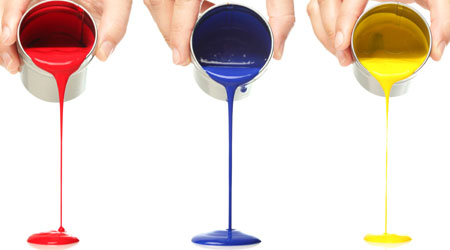
Know the difference between antimicrobial, antibacterial and microbicidal paint options
When it comes to coatings in a healthcare setting, there is much more to consider than just color. In addition to aesthetic benefits, recent advancements in technology now allow paint to go beyond color to accomplish several important tasks, such as killing harmful pathogens on painted surfaces, helping reduce odors and improving indoor air quality.
Facility managers tasked with selecting a coating for a healthcare project, should know the difference between these new technologies to ensure the correct one is chosen for the right environment, according to Steve Revnew, senior vice president of product innovation at Sherwin-Williams.
Sounds simple enough, but advancements in coating technology can give facility managers reason to pause. One source of confusion with these new offerings is the use of the terms antimicrobial, antibacterial and microbicidal. Each term refers to specific benefits.
Recognizing Options
Knowledge of the various paint technologies and terminology, along with other considerations, can empower healthcare facility professionals when they are selecting the coating that will give them the most impactful outcome in both look and function.
To help streamline the process, here is a breakdown of the differences between antimicrobial, antibacterial and microbicidal.
Antimicrobial: When microbes grow on the painted surface, they can stain and deteriorate the paint film, thus reducing the coating’s integrity. Coatings that contain an antimicrobial can inhibit the growth of these microorganisms — such as mildew and mold — protecting the film itself from degradation. In addition, antimicrobial agents inhibit the growth of bacterial odor.
The term antimicrobial can be used in a variety of product claims across industries. As such, products that claim antimicrobial properties with a public or non-public health claim must go through appropriate testing by product type to demonstrate efficacy and then approval by the U.S. Environmental Protection Agency (EPA).
Antibacterial: A type of antimicrobial, antibacterial agents are used to inhibit the growth of bacteria. However, in paint, antibacterial agents typically inhibit only the growth of the common microbes that make up harmful bacteria, thus only protecting the paint film itself.
Microbicidal: Generally speaking, microbicidal substances or compounds go a step further by actually killing microscopic organisms on the surface. Paints formulated with these properties are designed to kill bacteria or other disease-causing microorganisms on painted surfaces. Like other products with kill claims, this paint has to pass third-party tests for safety and certification, as well as health claim confirmation from the EPA.
“For instance, unlike antimicrobial paint, Paint Shield is a microbicidal paint that has an active ingredient — quaternary ammonium compound (Alkyl Dimethyl Benzyl Ammonium Chloride) — that actually kills five types of harmful bacteria,” says Revnew.
Most environmental services executives recognize that these quats are the same as those found in many disinfecting products used in health care. And like those chemicals, Sherwin-Williams Paint Shield — the first EPA-registered microbicidal paint — kills greater than 99.9 percent of Staph (Staphylococcus aureus), MRSA (Methicillin-resistant Staphylococcus aureus), E. coli (Escherichia coli), VRE (Vancomycin-resistant Enterococcus faecalis) and Enterobacter aerogenes within two hours of exposure on a painted surface, according to Revnew.
“The development of Paint Shield represents a major breakthrough in the industry, with far-reaching benefits for healthcare settings and more,” he adds. “This advancement in technology means hospitals and other similar facilities now have the ability to continuously kill harmful pathogens on painted surfaces with minimal effort. It’s a passive method of protection that works in coordination with other cleaning and sterilization protocols.”
CATHRYN JAKICIC is the editor of HealthcareFacilitiesToday.com, a sister brand of Facility Cleaning Decisions.

 The Down and Dirty on Cleaning in Virus Season
The Down and Dirty on Cleaning in Virus Season How Surfactant Use is Expanding in Commercial Cleaning
How Surfactant Use is Expanding in Commercial Cleaning Maximize Your Margins: Learn How to Automate Pricing and Track Rebates
Maximize Your Margins: Learn How to Automate Pricing and Track Rebates